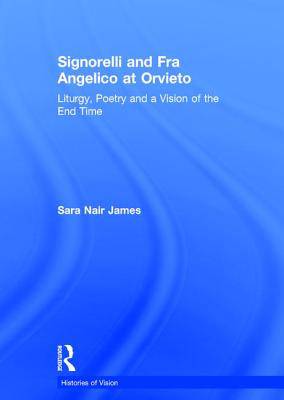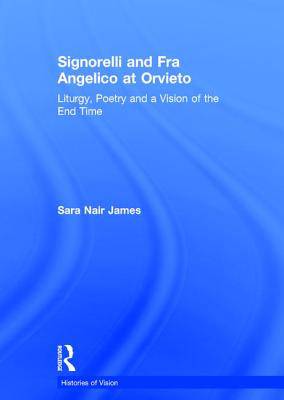
- Afhalen na 1 uur in een winkel met voorraad
- Gratis thuislevering in België vanaf € 30
- Ruim aanbod met 7 miljoen producten
- Afhalen na 1 uur in een winkel met voorraad
- Gratis thuislevering in België vanaf € 30
- Ruim aanbod met 7 miljoen producten
Zoeken
€ 48,95
+ 97 punten
Omschrijving
Built in 1290, the cathedral at Orvieto, Italy, is a masterpiece of Italian gothic architecture. The decoration of the Cappella Nuova, commenced by Fra Angelico in 1447 and magnificently completed by Luca Signorelli in 1499 and 1504, displays an awe-inspiring Last Judgement and Apocalypse and, below it, scenes from Dante and classical literature. Drawing on years of detailed research into the history of the chapel, Sara Nair James identifies Signorelli's theological advisors as a group of Dominican scholars, known as the 'Masters of the Sacred Page of this city'. She presents the decoration as an integrated whole, a program complex in iconography, message, source material and theory and, through a detailed response to Dante's Divine Comedy and a moralized reading of classical legends, explains how the events of the end-time join the literary narratives to form a sermon on salvation through penance. The book is not simply a work of traditional iconography, explaining the stories behind the pictures. It is an important study in the theory and techniques of the visual representation of religious belief and its reception by the laity. The detailed illustration includes many photographs taken after the restoration of the chapel in 1996.
Specificaties
Betrokkenen
- Auteur(s):
- Uitgeverij:
Inhoud
- Aantal bladzijden:
- 224
- Taal:
- Engels
- Reeks:
Eigenschappen
- Productcode (EAN):
- 9780754608134
- Verschijningsdatum:
- 4/12/2003
- Uitvoering:
- Hardcover
- Formaat:
- Genaaid
- Afmetingen:
- 175 mm x 246 mm
- Gewicht:
- 789 g

Alleen bij Standaard Boekhandel
+ 97 punten op je klantenkaart van Standaard Boekhandel
Beoordelingen
We publiceren alleen reviews die voldoen aan de voorwaarden voor reviews. Bekijk onze voorwaarden voor reviews.











